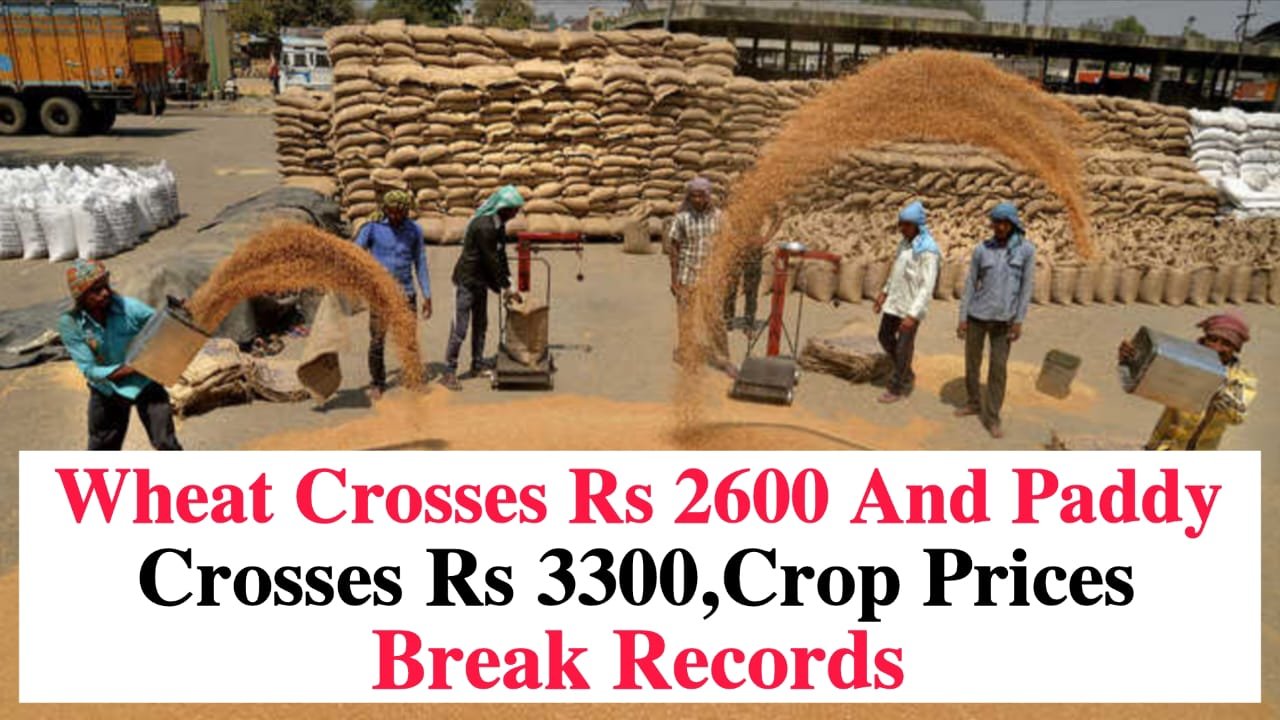Kota Mandi Price : As the monsoon season gradually begins to retreat, crop arrivals continue steadily in agricultural markets (mandis) across India. Despite the rainy conditions in many parts of the country, there has been no significant decline in the supply of crops. Market experts are observing continuous fluctuations in the prices of various agricultural commodities. In the current off-season, which typically witnesses lower arrivals, India’s mandis are still receiving substantial quantities of produce, reflecting strong agricultural activity and storage release from farmers and traders.
Taking a closer look at Bhama Shah Mandi, one of the prominent agricultural produce markets, Saturday saw the arrival of approximately 30,000 bags of various crops. Among the major changes in price trends, soybean saw a decline of ₹40 per quintal, whereas mustard rose by ₹140 per quintal. The mandi also witnessed an inflow of around 14,000 bags of garlic, with garlic prices ranging between ₹1500 to ₹7000 per quintal, depending on quality and grade. Garlic packed in boxes (box packing) traded between ₹4000 to ₹7500 per quintal. However, garlic prices on average fell by ₹300 per quintal on the day. Meanwhile, in the grocery market segment, prices of edible oils remained mostly stable, offering some relief to consumers and traders alike.
Let’s now take a look at the latest crop prices recorded across the country’s mandis:
Kota Mandi Price : Cereal Prices:
-
Wheat: ₹2523 to ₹2652 per quintal
-
Paddy Sugandha: ₹2180 to ₹2552 per quintal
-
Paddy (1847): ₹2580 to ₹2800 per quintal
-
Paddy (1509): ₹2180 to ₹2790 per quintal
-
Paddy (1718): ₹3000 to ₹3350 per quintal
-
Paddy Pusa: ₹2700 to ₹3101 per quintal
Wheat prices have hovered around ₹2600 per quintal, while the prices for various varieties of paddy are witnessing a notable upward trend, with some crossing ₹3300 per quintal. The high-quality 1718 and Pusa variants are leading the charts with their premium rates, attributed to quality and market demand.
Kota Mandi Price : Oilseeds and Pulses:
-
Soybean: ₹4000 to ₹4501 per quintal
-
Mustard: ₹6200 to ₹6600 per quintal
-
Linseed (Alsi): ₹6800 to ₹7000 per quintal
Soybean prices are showing minor weakness, while mustard continues to remain strong in the market due to consistent demand from oil mills. Linseed also remains steady in its price range.
Kota Mandi Price : Millets and Coarse Grains:
-
Hybrid Sorghum (Jowar Shankar): ₹2200 to ₹2700 per quintal
-
White Sorghum (Jowar Safed): ₹2800 to ₹4000 per quintal
-
Pearl Millet (Bajra): ₹2000 to ₹2300 per quintal
-
Maize (Makka): ₹2000 to ₹2180 per quintal
-
Barley (Jau): ₹2000 to ₹2300 per quintal
These coarse grains are vital for food security and are also used in industries and fodder. Jowar and Bajra are fetching good prices depending on variety and location.
Kota Mandi Price : Spices and Seeds:
-
Sesame (Til or Tilli): ₹7000 to ₹9100 per quintal
-
Fenugreek (Methi): ₹3800 to ₹4650 per quintal
-
Nigella (Kalonji): ₹16000 to ₹20000 per quintal
High-value spices such as Kalonji are trading at premium prices, indicating strong domestic and export demand. Sesame and fenugreek are also performing well in the market due to festive and medicinal uses.
Coriander Prices:
-
New Dry Coriander (Badami): ₹6000 to ₹6950 per quintal
-
New Coriander (Eagle variety): ₹6500 to ₹7200 per quintal
Both varieties of coriander are receiving decent prices, with the Eagle variety commanding a slight premium.
Pulse Prices:
-
Moong (Green Gram): ₹7000 to ₹7250 per quintal
-
Urad (Black Gram) Old: ₹4000 to ₹6000 per quintal
-
Urad New: ₹5000 to ₹6400 per quintal
-
Desi Chana (Bengal Gram): ₹5200 to ₹5450 per quintal
-
Seasonal Chana: ₹5000 to ₹5450 per quintal
-
Pepsi Chana: ₹4800 to ₹5500 per quintal
The pulse market remains vibrant with steady arrivals and moderate pricing, especially for Moong and Urad.
Edible Oil Market:
Prices for refined and mustard oils have shown little movement:
-
Soya Refined (Fortune): ₹2240 per 15-kg tin
-
Chambal Refined: ₹2220 per tin
-
Sadabahar: ₹2130 per tin
-
Local Refined Oil: ₹1990 per tin
-
Deep Jyoti: ₹2150 per tin
-
Mustard Oil (Swastik): ₹2750 per tin
-
Linseed Oil: ₹2360 per tin
In the groundnut oil category:
-
Truck Groundnut Oil: ₹2790 per tin
-
Kota Swastik: ₹2350 per tin
-
Sona Sikka: ₹2600 per tin
-
Kataria Gold: ₹2360 per tin
These prices are crucial for retailers and wholesalers who are dealing with edible oil products during the festive season.
Vanaspati Ghee and Sugar Prices:
-
Vanaspati Ghee (Scooter and Ashoka brands): ₹1890 per 15-kg tin
-
Sugar: ₹4300 to ₹4340 per quintal
Sugar prices remain relatively firm in the current market due to steady demand from sweet shops and bulk buyers ahead of the festive season.
Desi Ghee Price Update (Per 15-kg Tin):
-
Milk Food: ₹9190
-
Kota Fresh: ₹9000
-
Paras: ₹9150
-
Nova: ₹9100
-
Amul: ₹9350
-
Saras: ₹9460
-
Madhusudan: ₹9580
Desi ghee, a staple in Indian households and rituals, is being traded at high values, with the Madhusudan brand topping the chart.
Rice and Dal Prices:
-
Basmati Rice: ₹7000 to ₹8500 per quintal
-
Moong Dal: ₹8500 to ₹9000 per quintal
-
Moong Mogar: ₹9500 to ₹10000 per quintal
-
Urad Dal: ₹8000 to ₹9000 per quintal
-
Toor (Arhar) Dal: ₹7500 to ₹10300 per quintal
Prices of processed pulses and premium basmati rice are firming up as demand peaks during festive months.
Gold and Silver Prices in Kota (As of September 17, 2025):
-
24-Carat Gold: ₹10,500 per gram
-
22-Carat Gold: ₹9999.99 per gram
-
18-Carat Gold: ₹7128 per gram
-
Silver: ₹1,43,128 per kg
Gold and silver prices in the Kota bullion market have surged, reflecting global market trends, currency fluctuations, and upcoming festival demand.
Infrastructure Update – New Expressway in Uttar Pradesh:
In other news, a new expressway in Uttar Pradesh is set to pass through 15 districts, and land acquisition work is expected to begin soon. This development is expected to significantly boost connectivity and regional trade in the state.
This comprehensive market update captures the dynamic nature of agricultural commodity prices, reflecting both seasonal trends and economic indicators. Farmers, traders, and investors are advised to stay alert to market developments, weather forecasts, and policy changes, as all these factors continue to influence the Indian agri-economy.



